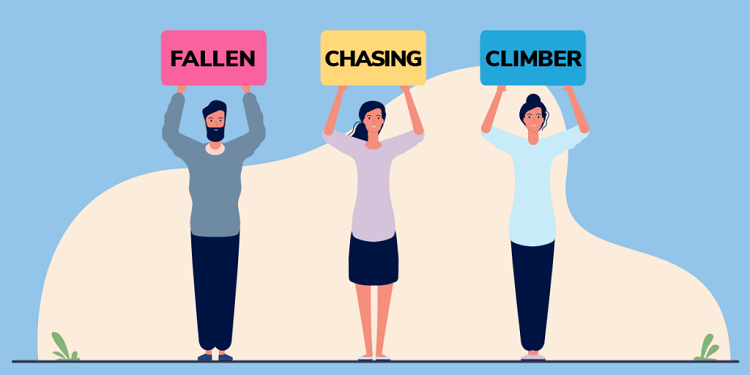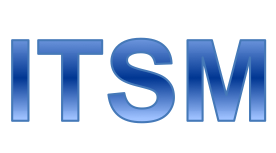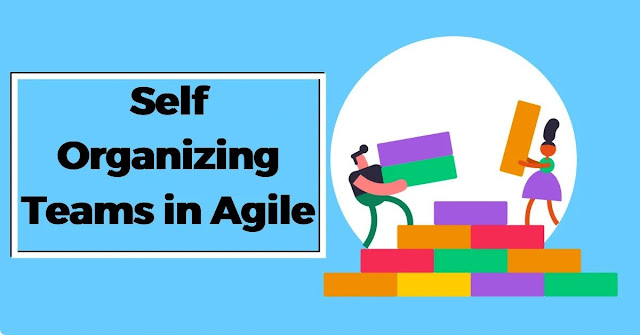How did your IT organization, group, or department fare during the global pandemic? If you’re looking to classify its performance – after all, we love to classify things in IT, then our research identified three distinct groups in terms of performance. These can be segmented approximately by their IT maturity but also the role of the IT leader in their organization:
1. The Fallen. These are the IT groups that tried, but failed, and have already been outsourced, or absorbed by shared services. Low levels of maturity, historic under investment in systems, and wider adoption of cloud technology by non-IT functions accelerated their decline.
2. The Chasing Pack. These are the IT groups still progressing their journeys but will not be there any time soon. The vast majority of the industry is playing catch up and trying to align with the transformation required. With 40% of boards thinking that IT can be outsourced, their success is not guaranteed.
3. The Climbers. These are the IT groups that delivered order from chaos. They represent a small percentage of the industry, with high levels of IT maturity, skills, and experience in place based on previous digital transformation plans, and an IT leader who has a seat at the exec table.
Each of these is described in more detail in the remainder of this article.
1. The Fallen IT Organizations
These IT groups are a clear signpost to the industry of what will happen if IT does not align with business requirements and enable transformation. In good times, businesses will tolerate a degree of waste and inefficiency, but when times get tough, the focus of organizations naturally turns to cost containment. Now, more than ever, IT groups that are not seen to be adding value face the threat of outsourcing. Before the pandemic, the writing was already on the wall for IT groups in this category.
In 2017, research by McKinsey & Co found that more than 40% of business executives believed that IT could be significantly or fully replaced by third-party services, with minimal impact on the business. Although senior IT executives did not share that opinion (80% difference), the pandemic has already driven a significant increase in outsourcing.
In both Q3 and Q4 2020, the value of UK outsourcing contracts increased by 60% compared with the previous year. Alongside the rise of managed service providers (MSPs), the shared services approach is also gaining traction, especially in the public sector. Organizations within the same market sector are pooling their resources and reducing costs by enabling efficient service delivery teams to absorb the user base of poor performers.
Within the Fallen group, the business mandate for IT has always been to: “Run faster, better, and cheaper than last year.” IT is perceived as transactional, undeserving of a seat at the table, and executives make business decisions without IT involvement.
A common symptom of IT groups in this category is chronic underinvestment. As a result, legacy technology prevails, and siloed IT teams are forced to stick with the same old tools for years. Teams are flat out managing older technology, and there’s never enough time, money, or resources to change. Now, change has been forced upon them, and in the era of hyper-transformation, they’ll struggle to survive.
2. The Chasing Pack
Businesses in the Chasing Pack see value in their IT functions. They may not be able to quantify IT value in terms of contribution to business goals, but neither can IT. Although the CIO’s voice occasionally reverberates at the boardroom table, IT is still perceived as a supporting function, a means of driving efficiency, and investment is typically limited to 3-5% of the overall business budget.
IT groups within this group are primarily focused on frameworks. Efficiency is measured using IT metrics based on demand, workload, and service level performance. ITIL adoption delivers a step change, which encourages further investment, and slow and steady adoption of increased levels of best practice. Maturity assessments and positioning on IT maturity models reveal a stark reality, with most IT groups stuck between levels 2 and 3. Unable to break through the glass ceiling, IT groups look for tools to increase their ITIL capabilities.
Here the selection process often ends with the procurement of an overly complex, expensive tool, with more functionality than the average IT group can deploy in a lifetime. When the new tool is implemented, the initial focus on service improvement makes things better, but only for a short time. Once the tool has bedded in, the focus on improvement usually stops. Mediocrity takes over, the tool gets blamed and the whole cycle is repeated, without any attention paid to the lessons learned from the previous experience.
The pandemic may have taught groups within the Chasing Pack that they cannot continue to water their IT garden while the rest of the house is on fire. But if this lesson has not been learned, it will soon become apparent when these groups seek budgetary approval for new tools.
Given the expected pace of change this year, IT groups in this group must raise their game. The focus must shift from supporting infrastructure, to supporting people, and from delivering services, to delivering outcomes. As the office decentralizes, and infrastructure races to the cloud, the traditional perception of IT as a service provider must be challenged. Importantly, IT teams and systems that are designed for triage, will not deliver transformation.
3. The Climbers
As the pandemic hit, IT groups in this category were better prepared. Modern technology and self-sufficient IT teams enabled their organizations to adapt quickly. This allowed them to keep climbing ladders and break through the self-imposed glass ceiling of the Chasing Pack.
IT groups in this category apply a systems thinking approach and understand that if you focus on managing cost, the cost goes up because you design for failure demand. Whereas, if you focus on value, the cost comes down. They also understand that value is based on customer perception. It cannot be delivered using inside-out approaches based on guessing. Instead, they take an outside-in approach, get close to their customers, understand their challenges, and co-create highly visible value.
Important IT groups in this category can answer these four questions:
1. Who are my customers?
2. Which activities do they perform in pursuit of their success?
3. How do we support them with those activities?
4. What do they say about our service?
Respected and supported by the business, the Climbers can afford to keep their service management tools up to date, and they regularly review innovation within the market. When specifying and deploying tools, they prioritize user experience over shiny new IT toys and slavish adherence to frameworks. They want self-sufficiency, and the ability to design, automate, and integrate processes without the need for projects, partners, and technical gurus. These IT teams are effective at triage, but their focus is transformation, and they’re trusted to lead.
At the height of the crisis, they deployed solutions for other business areas. Analog teams with heavy dependencies on manual processes were suddenly introduced to new digital experiences that made life at work better. The genie is out of the bottle, and there’s no going back now.
So where does your IT organization sit?
The Fallen have been outsourced or absorbed. Can IT teams in the Chasing Pack cope with a huge increase in the adoption of new technologies, an incredible pace of change, and a business outlook that will be less tolerant of waste and inefficiency? Make no mistake, in the current climate getting this right is vital, and the danger of not doing so is real.
Source: itsm.tools.com
























